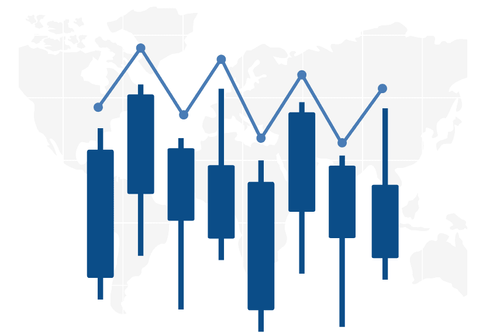7 Things That Are Moving Markets
- 3m•
- 1,170•
- 24 Apr 2023
There is a very high expectation in the stock market. Over the past one month, benchmark indices like the S&P BSE Sensex and Nifty 50 have gained ground. The interplay between the political factors and the recent encouraging economic trends are keeping the markets buoyant. It is important to understand how to connect the dots.
Here are 7 factors influencing markets:
1. The Rupee Rally:
The rupee made a turnaround in 5 weeks to transition from Asia’s worst performing currency to its best. On 18 March 2019, the rupee closed at a seven-month high at 68.50 to the US dollar. Fueled by foreign inflows into Indian equities and a lower trade deficit, the rally in the rupee makes Indian equities attractive for foreign investors. To add to that, pollsters are giving a simple majority to the current government.

2. High Hopes Of Modi’s Re-election:
The stock markets have been on an upsurge following a renewed wave of popularity and confidence in the ruling BJP government. The airstrikes conducted by the Indian Air Force on Jaish-eMohammad camps in Pakistan was welcomed as a decisive foreign policy move by Prime Minister Narendra Modi. The move was welcomed as a much-needed stance on India’s national security policy and has fuelled speculations of Narendra Modi retaining power in the upcoming elections. Markets have reacted positively to the possibility of India having a stable government.
3. Crude Oil Prices:
India depends heavily on oil imports which determines market trends. Crude oil prices have increased by 25% in 2019. Despite the increase in global crude prices on expectations that the Organization of Petroleum Exporting Countries OPEC) would continue production cuts through the end of the year, Indian equities have not been negatively impacted by this. The risk of rising crude oil prices remains.
4. Gold Imports And Prices:
Historically, gold has always been considered to have the highest value as a hedge against uncertainty. The affinity for gold, especially in India, is not only due to its social and cultural significance but also for the higher sense of stability that gold investments offer compared to other asset classes. With a weaker dollar, gold has been hovering around a 10-month high. However, over the past one month, gold prices are off the high level.
5. Trade Deficit:
Rise in exports and a fall of imports have a positive impact on the market by narrowing the trade deficit. A reduction in trade deficit reigns in foreign exchange outflows causing the rupee to surge which is a positive sign for investors. India’s trade deficit narrowed to a 17-month low in February with a 2.44% rise in exports. India owes less in foreign exchange as a result and it favours the currency.
6. Increase In Foreign Inflows:
Foreign Institutional Investors (FIIs) have parked $2.43 billion in March in Indian equities and debt stocks, the highest since November 2017. (Source: https://bit.ly/2Fk6THh) The attractiveness of the Indian market has increased owing to a stable INR, controlled inflation and the growing possibility of the ruling party coming back to power after the air strikes in Balakot, Pakistan. The inflow of FIIs have also been propelled due to better valuations in Indian companies after the third-quarter earnings season. The increase in FII investments pushed the liquidity higher which have had a positive impact on the performance of Indian equities. The International Monetary Fund continues to put out a positive outlook for India’s growth. In a recent release, IMF urged India to continue with economic reforms to take advantage of the so-called demographic dividend.
7. Fears Of Recession In The U.S.:
After a period of highs, the Indian markets saw stocks tumbling following speculations of the United States heading towards another recession. The decision of the U.S. Federal Reserve to not hike interest rakes came as a shocker eroding confidence in the world’s largest economy. The ongoing international trade tussle between U.S. and China, the U.S. unemployment figures reaching a 10-month high in March and the dismal performance of the U.S. manufacturing sector have made investors wary with markets falling worldwide.
One Related Number : 750 Tonnes
India imported 750 tonnes of gold in April-December 2018 according to CIMIE data. Gold has always been extremely popular among Indians especially as a low risk asset class for married women who are not financially independent.





